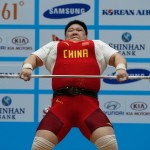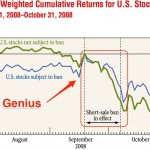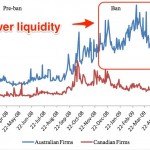Why short-selling ban won't help Chinese stock market – Business …

REUTERS/Jason ReedChina is trying hard to hold up its stock market.
The first sign of a full-blown crisis is when the government tries to ban short-selling, and China is no exception.
Short-sellers borrow stocks and immediately sell them off, reasoning they can buy them back at a lower price in the future and pocket the difference.
But their negative bets put downward pressure on stock prices.
The US, along with most of the world, tried a short ban in 2008, when the stock market was melting down. Europe followed with a short ban on some credit derivatives and bank shares as its sovereign-debt crisis exploded in 2010 and 2011.
And now it’s China’s turn to halt short-selling as its share indices plunge. The country unveiled rules that make it harder for speculators to profit from hourly price changes, as some of the nation’s major brokerages suspended their short-selling businesses.
Studies of these bans show that while they can inflate some prices briefly, they can’t hold up the whole market.
Here’s a chart from the New York Fed showing what happened in 2008:
NY Fed
Policymakers often regard short-sellers as malicious because they profit from a market downturn while the buy-and-hold crowd loses out, so they try to get rid of them.
But banning them can damage investor confidence in the market (because it becomes harder to tell what a stock is really worth), reduce liquidity, and push up trading costs, encouraging people to get out while they still can.
Here’s a graph from a 2011 academic paper that shows the difference in bid-offer spreads between Australian stocks that had a short-selling ban imposed and the same stocks in Canada, which didn’t have a ban.
The measure is used to calculate how easy it is for buyers and sellers to interact in a market. The higher it is, the harder it is to trade and the less liquid the market is. The blue line represents the stocks with the ban in place, and it stays higher even after the ban is lifted.
Uwe Helmes, Julia Henker and Thomas Henker
A bid-offer spread is the difference in price between what the highest bidder will buy at and what the lowest seller will sell at. If the spread is wide, it indicates that the market is illiquid, making it harder for buyers and sellers to find others willing to do a deal at the price they want.
NOW WATCH: The cheapest new Ferrari money can buy is absolutely gorgeous
Please enable Javascript to watch this video
Read article here –
Why short-selling ban won't help Chinese stock market – Business …



